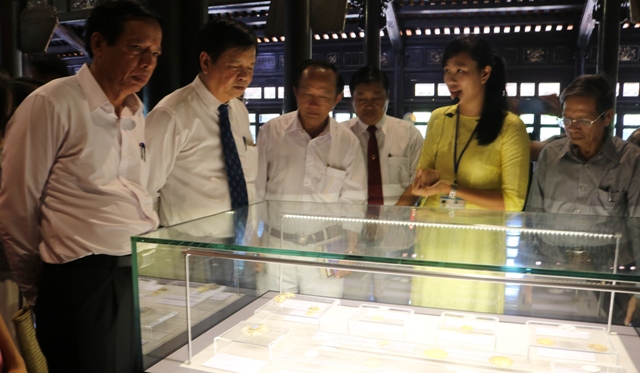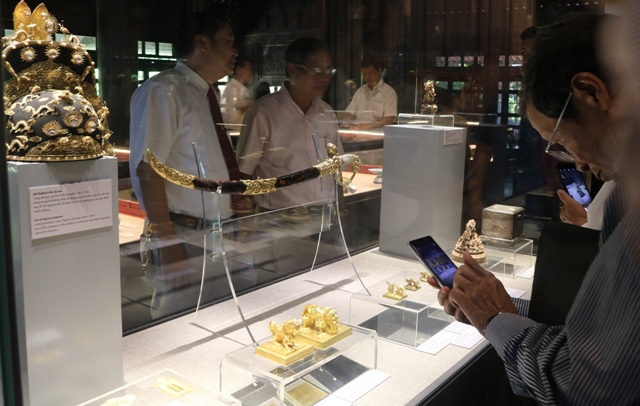
Introducing to the delegates the antiques decorated with dragons and phoenixes
The antiques displayed at the exhibition are items used in the life and rituals of the Nguyen Dynasty. They are made of rare precious materials such as gold, silver, gem, jade, and turtle shells. They are categorized into 4 groups: objects of power symbol, objects used for the altar and rituals, objects used in the office and everyday life objects.

The King's royal hat decorated with the image of dragons
Hue was the capital of the Nguyen dynasty (1802-1945) and was also the last capital of Vietnam under the monarchy. In the Nguyen dynasty, the most prominent and most popular of Hue art forms were the four sacred animals, including Long (dragon), Phuong (phoenix), Lan (unicorn), and Linh Quy (sacred turtle), and the most typical of the four were the dragon and phoenix.
Dragons appeared very early in Vietnamese art, but it was not until the Nguyen Dynasty that the image of the dragon reached its artistic height, with a variety of portrayed topics, materials, and forms of expression. Like the dragon, the phoenix is a special symbol in the Vietnamese culture. But unlike dragons, which originated from the north, phoenixes may be the product of the Southern people.

Safeguarding the dragon image on the Nguyen Dynasty’s antiques
"It can be said that the dragon-phoenix image of the Nguyen Dynasty has been presented by contemporary artists on various materials. In addition to the symbol of power, the dragon-phoenix image is also a prayer for the prosperity of the regime. From traditional art, the dragon-phoenix image entered imperial art, which was optimized to carry the image of the supreme power of the throne. At the same time, it symbolized openness and the aspiration for a peaceful society. The Nguyen Dynasty’s dragon-phoenix symbol has left a huge legacy in shaping art forms and is a multi-dimensional symbol of the Vietnamese culture. These are priceless treasures that not only contain historical, cultural and artistic values of an era, but they also reflect the talents and creativity of Vietnamese artisans in crafting products under the monarchy," said Dr. Phan Thanh Hai, Director of Hue Monuments Conservation Center.
Story and photos: Dong Van